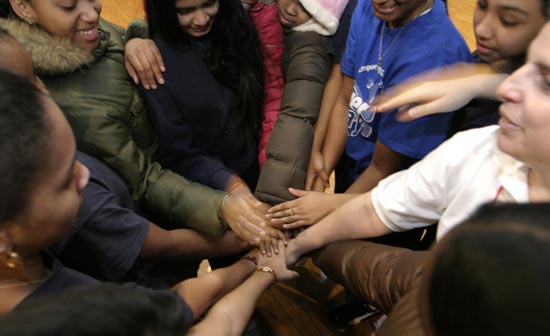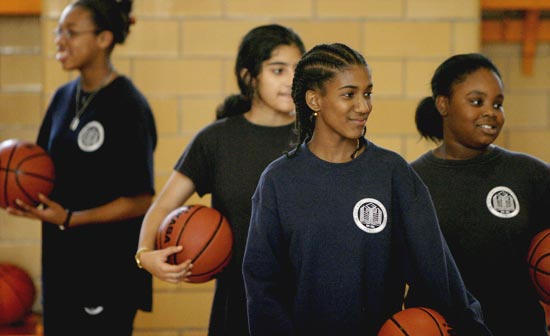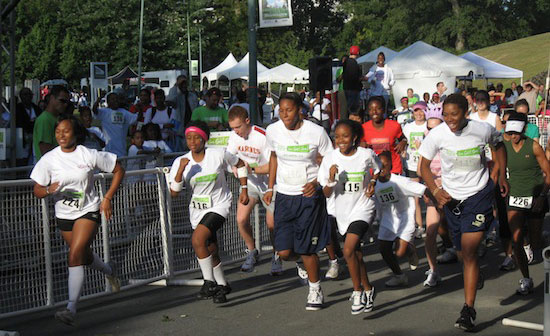The health of today’s girls is threatened by inactivity. Physical activity plays a significant role to reduce health risks such as obesity, heart disease, osteoporosis, breast cancer, unintended pregnancy and lack of self-esteem among others. Hispanic girls are at greater risk than non-Hispanic girls for most of these health risks and more likely to be sedentary. Very little research has focused on the relationship between physical activity and health within the young Hispanic population, with the exception of the groundbreaking Women’s Sports Foundation Report: Minorities in Sports (Sabo, Melnick and Vanfossen, 1989). The current report highlights key indicators of the status of both the status of physical activity and health for Hispanic female youth in the Chicago metropolitan area; these indicators are then compared with national averages in order to contextualize the results.
The Status of Health and Physical Activity in Chicago Hispanic Girls

The Status of Female Youth Health and Physical Activity in the Chicago Metropolitan Area

This report highlights key indicators of both the status of physical activity and health for female youth in the Chicago metropolitan area; these indicators are then compared with national averages in order to contextualize the results. Overall, this report shows that female youth in the Chicago areas are not getting sufficient physical activity, either through sports teams or independent fitness programs.
The Status of Female Youth Health and Physical Activity in the Atlanta Metropolitan Area

This report highlights key indicators of both the status of physical activity and health for female youth in the Atlanta metropolitan area and the state of Georgia; these indicators are then compared with national averages in order to contextualize the results. Overall, this report shows that female youth in the Atlanta and Georgia areas are not getting sufficient physical activity, either through sports teams or physical education courses in school.
Her Life Depends on It

“Her Life Depends On It,” is the most comprehensive compilation of research to date about the impact of physical activity on the physical, psychological and cultural health of girls. The report points to physical activity and sport as fundamental solutions for many of the serious health and social problems faced by girls. These include obesity, heart disease, substance abuse, teen pregnancy and depression – which accounts for much of the more than $1 trillion spent on healthcare for treating these issues.
Download the complete research report below. Educate yourself–and then take action.
Title IX and Race in Intercollegiate Sport

Are women of color receiving their fair share of the opportunities in intercollegiate athletics? Some writers have suggested that female athletes of color have not accrued as many gains during the Title IX era of American sport as white female athletes. Other writers suggest that Title IX has hurt male athletes of color. Overall, Title IX of the Education Amendments of 1972, the federal law that prohibits discrimination on the basis of sex in all education programs and activities receiving federal funds, has helped to spur girls’ and women’s participation in sport. Yet the assessment of progress in intercollegiate sport by women of color and men of color is confounded not only by the complexity of race relations in American history, but also by the scarcity of reliable data on minority athletic participation rates during the Title IX era (from 1970 to the present).
Health Risks and the Teen Athlete

Offers a comprehensive evaluation of the linkages, both positive and negative, between sport and adolescent health risks. The Women’s Sports Foundation presents these findings in order to foster serious dialogue over the benefits and risks of adolescent athletic participation. The fact that sports has positive impacts on many young people’s lives cannot be argued. This report analyzes some of the multifaceted connections of the sports experience to the health, safety, and fitness of American teenagers.
Read the full report below.
Gender Equity Report Card

Are women receiving a fair share of the opportunities in intercollegiate athletics? The 25 year-old debate and discussion on this question has been heavy with controversy and light on facts. Indeed, the facts were unavailable to the public until the publication of the NCAA’s first Gender Equity Report in 1992. A limitation of this report, however, was that it presented aggregate data, which did not allow the public to view the performance of individual institutions. This lack of information made levelheaded discussion and analysis of gender equity difficult, and it also stymied efforts to hold individual schools accountable to the law. With the passage of The Equity in Athletics Disclosure Act of 1994 (EADA), schools became obliged to divulge participation rates between women and men, coaching salaries and expenses, student aid and operating expenses. On an annual basis, beginning in October of 1996, these data became available by name of individual institution.
Minorities in Sports

A study showing the effects of high school varsity sports participation on academic achievement, career upward mobility, leadership aspirations, and social involvement of women, African Americans, and Hispanic Americans.
